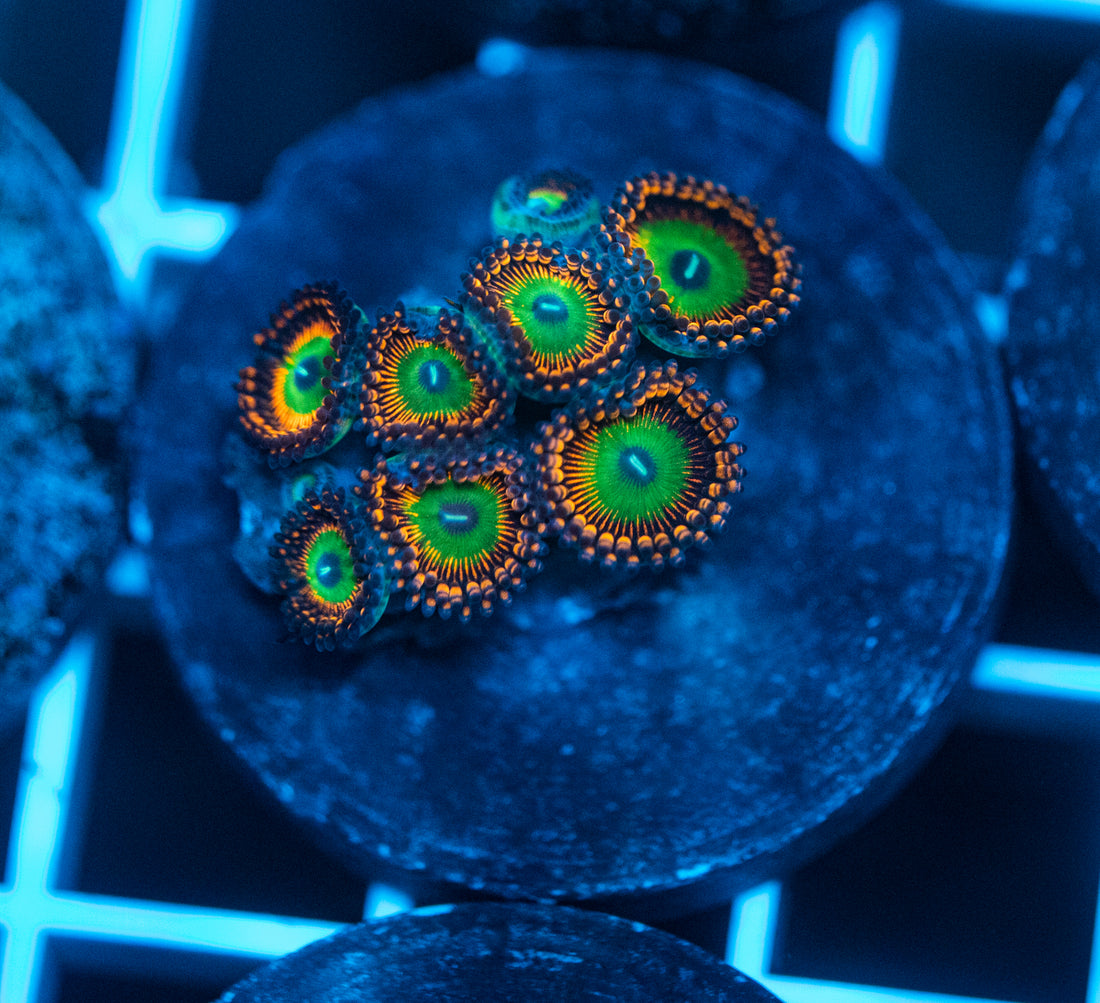
Zoanthids are a type of invertebrate animal that belongs to the phylum Cnidaria, which also includes corals, anemones, and jellyfish. Though zoanthids are often mistaken for corals, they are distinct from corals in several ways. In this blog, we will explore the various aspects of zoanthids and gain insights into their fascinating world.
First, let's talk about their general appearance. Zoanthids are relatively small polyps that attach themselves to rocks or other hard surfaces using a basal disc. These polyps have a cylindrical shape with a small oral disc at the top, from which they feed. They come in different colors, including green, blue, pink, red, and brown, with many different patterns, including stripes, spots, and swirls. These colors and patterns make them popular among aquarists, who often keep them as ornamental creatures in their saltwater aquariums.

Now, let's discuss their classification and species. Zoanthids have a complex taxonomy and are part of the hexacorallian group of Cnidarians. There are several species of zoanthids, but the most commonly known are the button polyps (Zoanthus spp.) and the larger colonial polyps (Palythoa spp.), which are often referred to as "rock anemones." Zoanthids range from shallow water reefs to deepwater canyons, offering a wide variety of habitats for the species. Zoanthids also have a mutualistic relationship with symbiotic zooxanthellae, which gives them their vibrant colors and helps them survive in different environments.
Now, let's talk about their behavior and care. Zoanthids are relatively easy to care for and can thrive in a variety of light conditions and currents. They require regular water changes and proper filtration to maintain a healthy environment. Zoanthids are also known to have a potent sting, which is why aquarists need to handle them with care.
Moreover, zoanthids provide ecological benefits to reefs, including the balancing of the reef's ecosystem and the creation of a home for smaller species. They are a source of food for many marine animals, including fish, crabs, and sea stars. However, some species of zoanthids may also contain potent toxins that can have harmful effects on humans and other species, so it's essential to practice caution when handling them.

In conclusion, zoanthids are an exciting and unique species of invertebrate marine animal. They come in a wide range of colors and patterns and offer numerous ecological benefits to marine ecosystems. Whether you're an aquarist, a marine biologist, or just someone interested in learning about marine life, zoanthids are a fascinating creature that is worth exploring.

